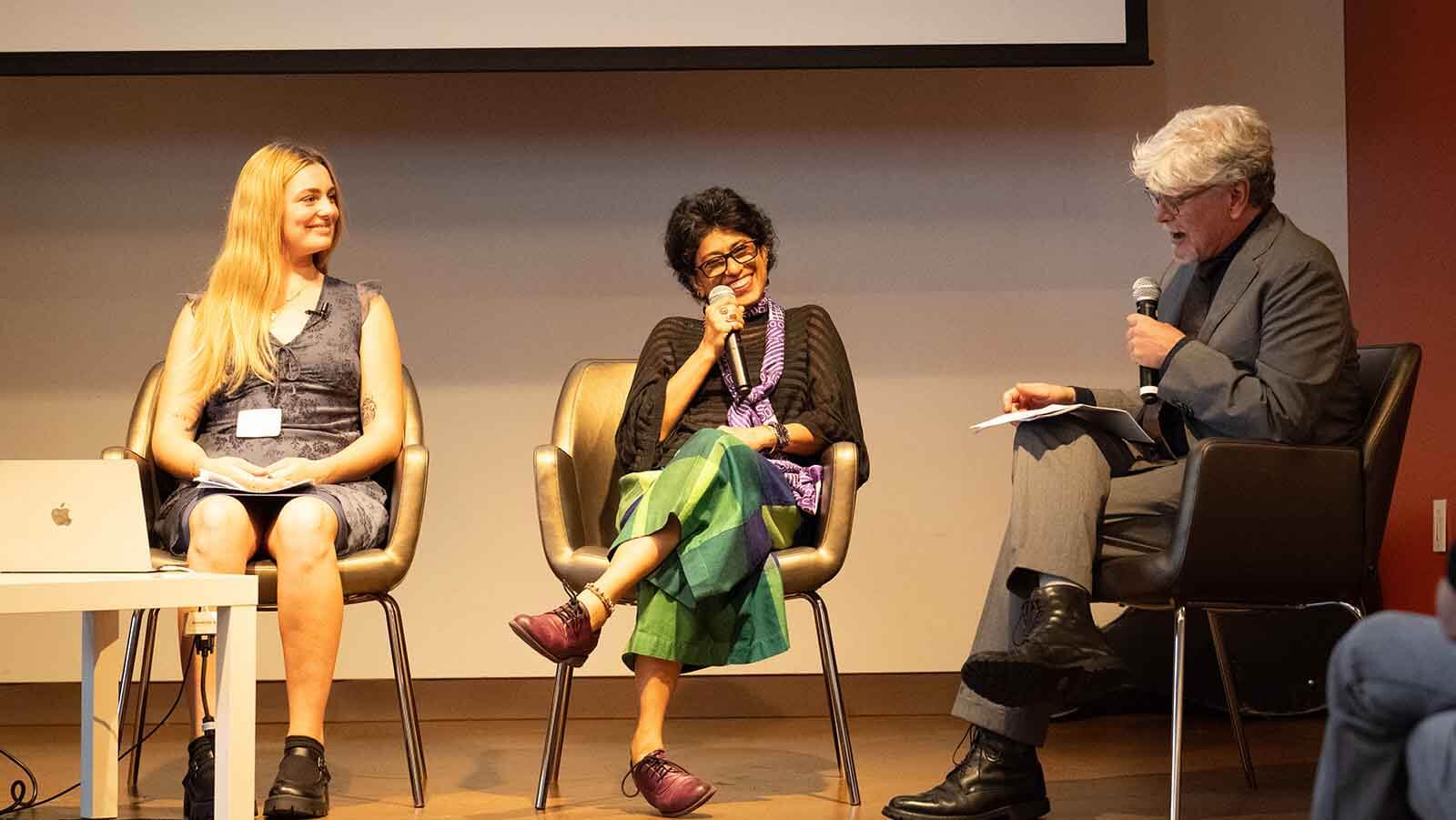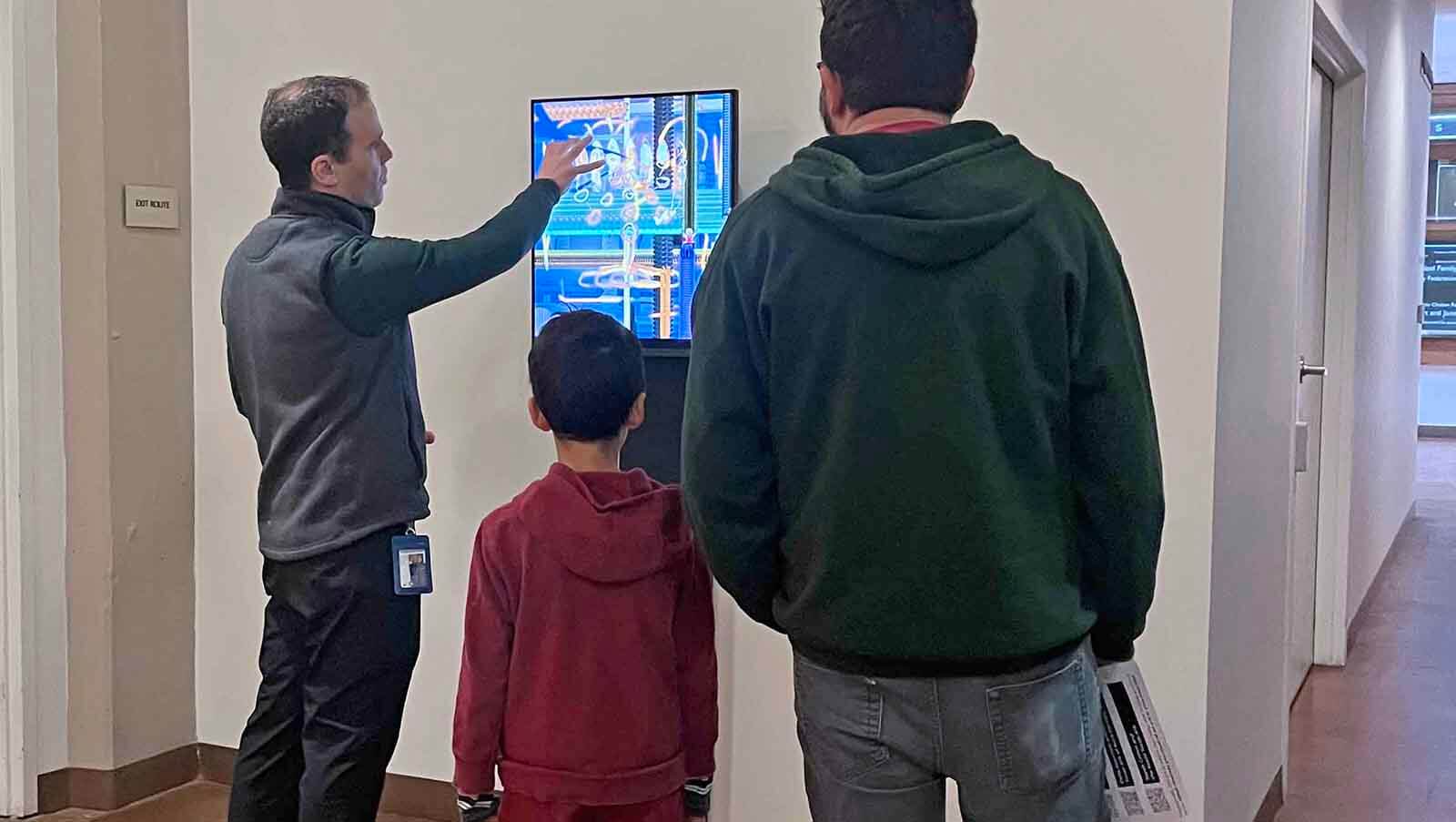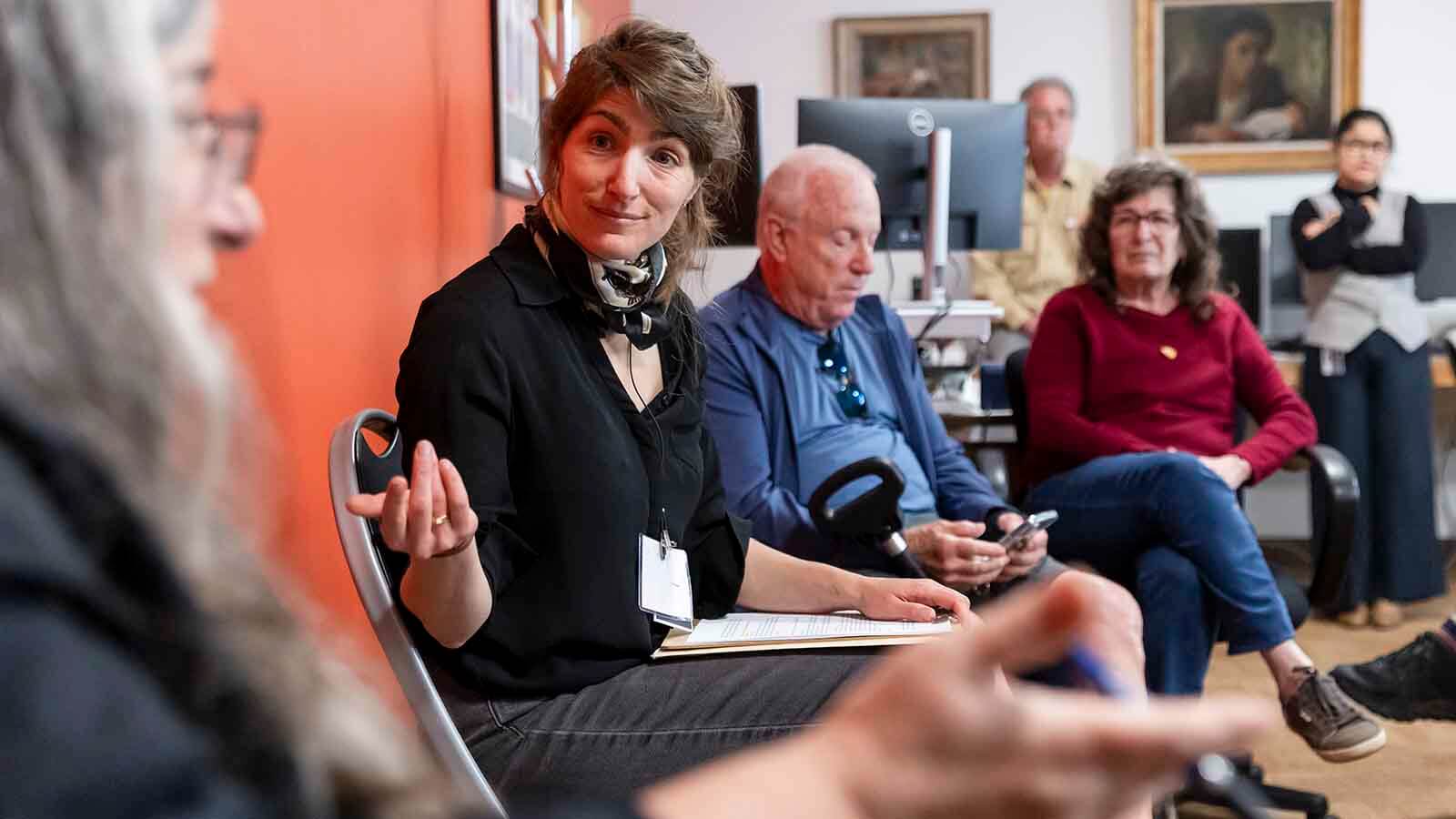News
In Plain Sight’s Opening Celebration
September 17, 2024
Image above: Paris Bailey, Dr. Qamar Adamjee, and Dr. Francesco Spagnolo share insight into the exhibition and their collaborative research. Photo by Keegan Houser.
New and long-time supporters, scholars, and Berkeley students filled the Magnes Thursday evening, September 5, 2024, to celebrate the opening of In Plain Sight: Jewish Arts and Lives in the Muslim World. Warm greetings and excited conversation could be heard over the rich notes of the oud as guests discussed the new exhibition showcasing artworks and objects from the Magnes’s permanent collection that challenge common views about historical dualities and highlight creative engagement among Muslim and Jewish artists.
Exhibition co-curators Dr. Francesco Spagnolo and Dr. Qamar Adamjee, scholar of Islamic art, shared details about the exhibition, research, and their collaboration in a conversation moderated by the exhibition’s Undergraduate Curatorial Assistant and recipient of the 2024 URAP Summer Award, Paris Grae Bailey, a UC Berkeley senior majoring in Art History.
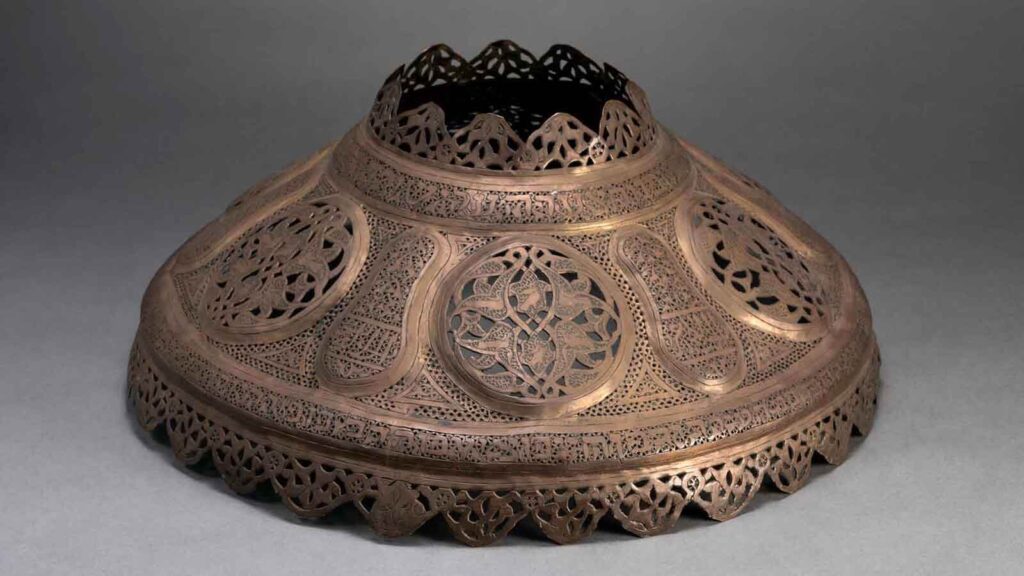
In discussing a circa 1920 copper lampshade from North Africa, Dr. Spagnolo stated, “This is very much ‘in plain sight.’” Inscribed with two circles of biblical quotations in Hebrew alongside footprints of the sandal of the Prophet Muhammad, it “projects a shadow at the center of the gallery, for visitors to walk in and bathe in the light projected through, inundated by these multi, overlapping layers of meaning.”
Designed by Carole Jeung and installed by David Sullivan and Jennifer Cole, the exhibition is organized around the shape of the khamsa or hand of Fatima, a mutually meaningful visual shape that is well-known in both Jewish and Muslim cultures. The exhibition section “Light and Shadow” sits at the center of the gallery, or in the palm of the hand. Five additional sections, or fingers, radiate from the center: “Belonging in Place,” “Sharing Shapes,” “Symbolic Architecture,” “Containing Texts & Adorning Bodies,” and “Global Networks.”
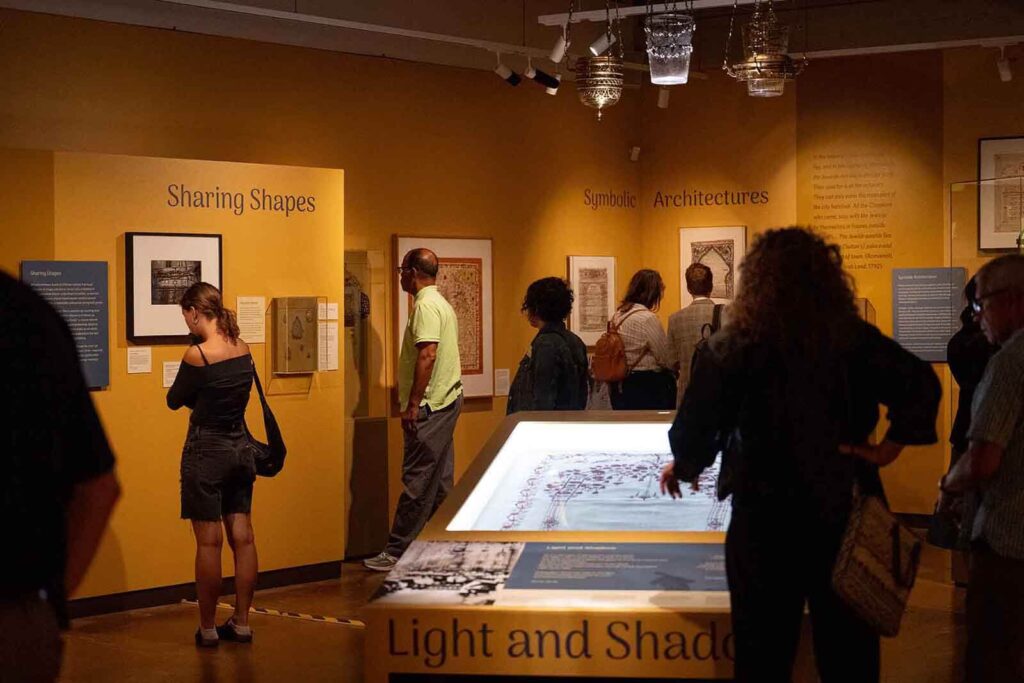
Speaking about what they learned in studying a variety of objects together, Dr. Adamjee stated “[You] take things that on the surface look different, but the more you interrogate them, the more you look at them, you realize, yes, there are patterns and threads that tie it all together. And to me it feels like a fabric, a beautiful textile where different threads come together and they each hold their own place, but they are part of something new and something interesting.”
As more than 200 guests enjoyed the exhibition, they saw many objects with overlapping and a shared use of shapes. Whether the khamsa, six- and eight-pointed stars, cypress trees, or concentric circles, these motifs run across cultures and regions, depicting a sense of rootedness after centuries of Jewish life and co-existence across Muslim lands.
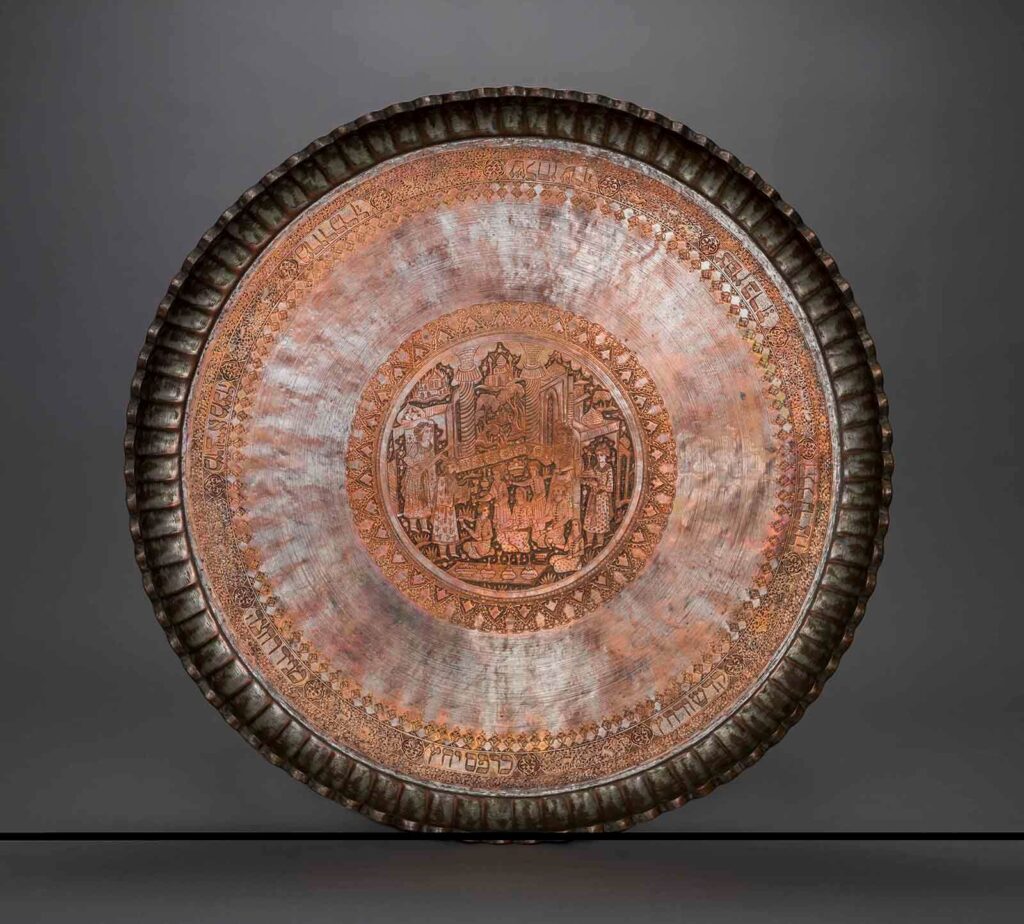
This exhibition represents the culmination of more than five years of curatorial collaboration after Dr. Spagnolo invited Dr. Adamjee to study the collection with him. Magnes Registrar Julie Franklin and Assistant Registrar Andrea Calderon along with UC Berkeley Undergraduate Research Apprentices (URAP) Abe Jellinek, Walker Laughlin, Kayla Cohen, Philopathear Iweda, Felix Rosen, and Cynthia Rahman supported the project. Special thanks to UC Berkeley scholars Karen Barkey, Emily Gottreich, and Ethan Katz; University of Toronto’s Noam Sienna; Aga Khan Museum’s Filiz Çakır Phillip; and Graduate Theological Union’s Deena Aranoff and Carole Bier.
“I love exhibition openings for the energy they bring into the museum and the opportunities they create for connection between members of our community.”
– Hannah Weisman, Executive Director of the Magnes
“I love exhibition openings for the energy they bring into the museum and the opportunities they create for connection between members of our community. I look forward to sustaining that energy and to new connections and dialogue throughout the year as we continue to explore the themes of In Plain Sight with our academic and public communities,” said Magnes Executive Director Hannah Weisman.
The Magnes will present a series of exhibition-related programs during the academic year in collaboration with several partners—including UC Berkeley’s Center for Jewish Studies and Helen Diller Institute for Jewish Law and Israel Studies, the Graduate Theological Union, and JIMENA—as well as host class and community group visits to In Plain Sight.
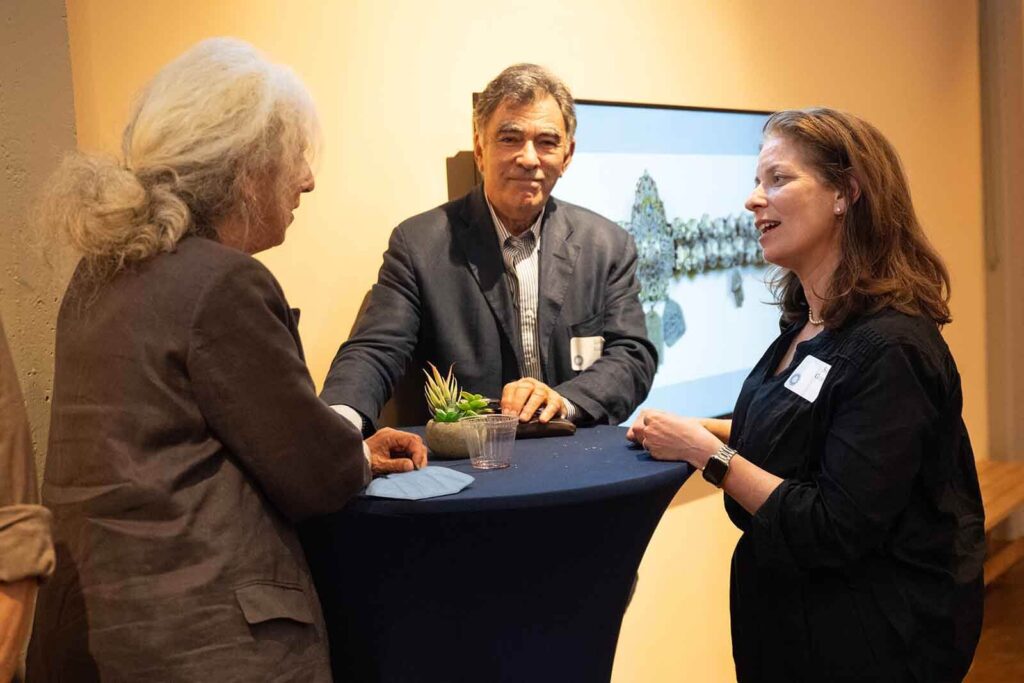
The opening celebration was presented by the Magnes and UC Berkeley’s Division of Arts & Humanities and included a special performance by local musician John Ehrlich.
Special thanks to the Walter & Elise Haas Fund, David Berg Foundation, Kenneth Kofman and Andrea King, and an anonymous donor, for generously supporting In Plain Sight.
Latest News
Keep Up-To-Date

